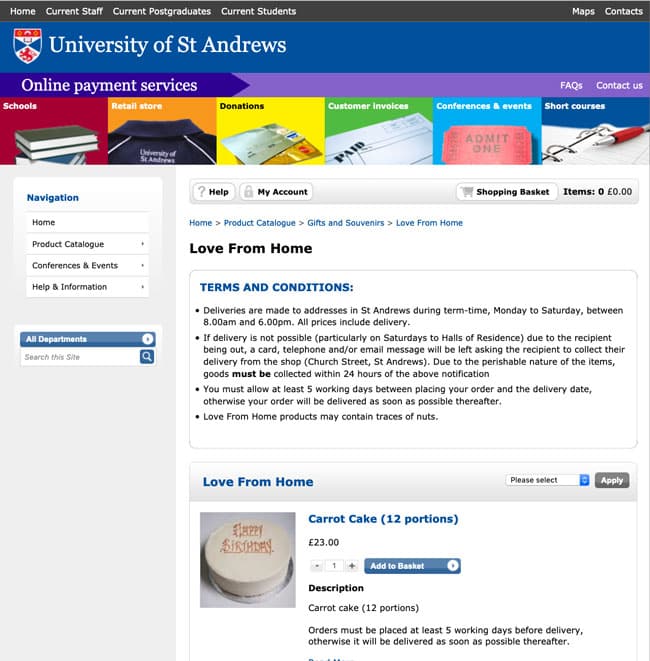New horizons: Selecting new markets and welcoming students from them
The following item is adapted from the 2019 edition of ICEF Insights magazine. The complete issue is available to download now.
The past year has witnessed a shift from “diversification” being a buzzword to being a term with real urgency attached to it for universities and colleges in major destinations. For several years, Chinese, Indian, and in some cases Saudi enrolments have grown constantly, quickly, and profitably for many institutions. Massive student flows from these countries have been the norm for so long that they have seemed almost a permanent feature of the international education landscape.
As we’re all very aware these days, however, the geopolitical environment is volatile, and demand factors for study abroad are changing by the minute. As we speak, China is in a trade war with the US and the US is restricting some Chinese student visas. Saudi Arabia has banned its remaining scholarship students from studying in Canada in reaction to Canada’s criticism of Saudi human rights policies. Meanwhile, the massive Saudi scholarship programme that sent so many students abroad is no more. The key market of India shifted away from the UK in recent years due to reduced post-study work rights for foreign students from 2012 to 2019; two-year work visas were restored in September, 2019.
Suddenly, the idea of adding a greater diversity of students to campuses feels like a serious priority. And we are beginning to see this priority yielding a greater mix of nationalities on campuses in major destinations.
For example, in 2018:
- The fastest-growing markets for Canada included Bangladesh, Iran, Vietnam, Colombia, the Philippines, Kenya, and Brazil;
- In the US, significant growth came from Brazil, Nepal, Pakistan, Nigeria, and Vietnam;
- British universities welcomed more Malaysian, Nigerian, and Thai students;
- In Australia, Nepal, Colombia, and Brazil contributed many more students;
- Japanese universities saw substantial growth from Vietnam, Nepal, Sri Lanka, Indonesia, and Myanmar;
- In South Korea, the number of Vietnamese students nearly doubled in one year.
How to select markets
The idea of diversifying a student population can seem overwhelming, but it becomes less so when you realise you don’t actually have to recruit from the entire world. It’s not about casting a really wide net and seeing what it drags in. Instead, it’s about carefully selecting one or two markets from which to recruit more students. It’s about building a base of students that can grow in the years to come.
Some ideas to consider:
- You probably have a foundation already. Within your student population, is there a small base of students from a new source market with a large youth demographic and growing demand for study abroad? Talk with these students about why they chose your institution.
- It can be a small world. Are there two promising markets close to one another you could focus on? For example, if you were in China at a student fair, could you also stop in Vietnam or the Philippines? Focusing on countries in close proximity can reduce travel costs and time.
Show your commitment
Students are attracted to study destinations where they feel welcome. Once you’ve chosen a target market, it’s time to roll out the red carpet for its students and their families.
Dedicate a webpage. Let’s say you’ve selected Indonesia. You could begin by creating a dedicated webpage for Indonesian students and use it to customise essential information for them. How about having a video with a current Indonesian student explaining – in Bahasa Indonesia – how to apply for a visa? Or featuring a tour of the campus led by an Indonesian student? Profiles of successful Indonesian graduates are also great, especially if they highlight employment outcomes in a way that makes success feel attainable for Indonesian prospects.
Ideally, have a live chat function on your dedicated Indonesia webpage. A Facebook page is a definite must and an affordable way to show that your institution is serious about supporting its Indonesian student community. A nice bonus: the page will take on a life of its own, with students’ voices and comments often just as helpful (and authentic) as anything your marketing team could say.

Don’t forget about parents! Parents need to be reassured that their children will be safe and happy in a faraway place. They will also look for proof that there will be a serious ROI attached to their child’s new credentials. Include a “Parents’ Zone” on your dedicated Indonesia page, full of FAQs and testimonials.

The attention to parents should continue well after students are enrolled. A quarterly newsletter just for them is a great way to keep families involved. So too are special programmes that allow them to send love from afar. At the University of St Andrews in the UK, parents can order a “Love from Home” care package to send their children everything from carrot cake to fudge doughnuts.

Consider a loss leader strategy
If you know that students in a new market must think about affordability when choosing if and where to study abroad, consider a scholarship programme or price reduction for as many students as your budget will allow. If your budget simply won’t accommodate such a programme, a contest that centres on an opportunity to bring down the costs of studying can be another way of nudging enrolments along.
For example, Acadia University in Canada is relatively small (under 4,000 students, with a student to faculty ratio of 14:1). Its staff had done research showing that affordability was a major barrier for a sizeable proportion of prospective students, so they launched a “Win Your Room” campaign that gave entrants a chance at a free residence room for a year.

Keep an eye on current students
If you have a fledgling group of students from a certain country – let’s stay with our Indonesian example to keep things concrete – the best way to encourage more Indonesians to come is to treat your current students right. Your campus is becoming more internationalised, and that means ensuring you have great supports in place for the Indonesians you already enrol. How are they doing with language and academic challenges? Are they making friends? Do they know how to get to a doctor, and do they feel confident enough in English to talk to that doctor about their symptoms? Do you have regular campus “mixer” events to help international and domestic students get to know each other?
Remember that your international students are in the midst of one of the most important parts of their lives – and (1) they are going to feel strongly about it, one way or the other, and (2) they are going to talk about it and take pictures and videos to send home. If you’re hoping to recruit more students from Indonesia, it’s imperative to help your current Indonesians have the best experience possible. Then give your satisfied crew every opportunity to share the fun they’re having – with your school’s hashtags.

For additional background, please see:
- “Diversification and the next five markets”
- “What makes international students happy? Research shows the answer depends in part on country of origin”
- “How accommodation features and amenities affect student decision making”
- “Study calls for focus on student satisfaction to boost recruitment”
- “The China challenge: Diversification and managing risk in international education”


















